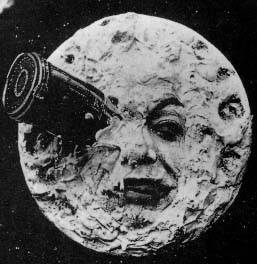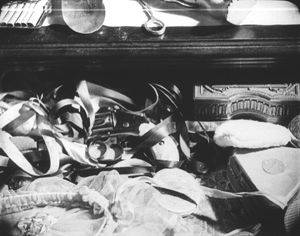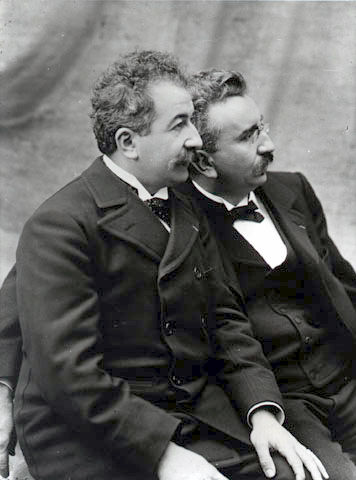The Silent Era - History of Silent Black and White Movies
The history of movies started in the late 19th century when technical advancements of the industrial revolution enabled the creation of the first motion picture cameras and projectors. After a few years of experimentation, filmmakers in Europe and the United States started producing short films (often minutes long) and distributing them in traveling theaters. It was quickly established that the production and reproduction of moving pictures were more cost-efficient and straightforward ways of entertaining the masses than the large traveling theatres or carnivals.
Powered by the rising public interest, large profit margins, and a sudden wave of technical inventions, the industry of motion pictures began spreading its influence in the mid-1880s. During the first 11 years of their existence in the commercial market from 1895 to 1906, silent movies created the foundation for the future establishment of movie studios, worldwide known stars, and early film grammar. Silent movies of those initial years were filmed in one shot, with a fixed non-moving camera, often with one person and few assistants, sometimes helped. By the end, they expanded to several minutes using professional companies' production.
Pioneers of the commercial film American Mutoscope Company used one-seated peep-show machines for reproduction. Traveling show presenters in tent theatres showed small reels of movies across Europe and the US. In 1905 first dedicated theatre, “The Nickelodeon,” was formed in 1905 in Pittsburg. Quickly after that, other American and European cities followed that trend and created theatres that showed 30-minute presentations with several shorter films.
Pioneers of the early silent movie era were based almost exclusively in Europe. French Lumière Company sent their camera operators to all four sides of the world to record over 1000 newsworthy events; Frenchman Georges Méliès managed to produce an astounding amount of movies (beating the entire France production for a time). His fame and popularity rose significantly because of his use of special trick effects, which were instrumental in creating some of the most popular movies of his time (such as the famous 14-minute-long science fiction film “A trip to the moon” from 1902). Other notable film producers were Frenchman Charles Pathé (who in 1905 owned the most prominent film company in the world) and Englishman Robert W. Paul, James Williamson, and G.A. Smith, who all had significant influence in the United Kingdom.
Between 1900 and 1906, many new film techniques were developed. Use simple film tricks, painted backdrops, stop motion, double exposure effects, reverse motion, inverted shots, variable camera speeds, and animation. In addition to those effects, film grammar continued to be developed by introducing more narrative structures, film continuity, point of view, a woman acting, and elaborate chase sequences.
By 1907, silent movies' popularity increased across the entire United States and Western Europe. Only in the United States over 4000 small “nickelodeon” cinemas were established in the US, and skilled pianists and other musicians accompanied movie performances. Large US movie companies tried to unite their patents in one central trust (Motion Picture Patents Company). Still, their market hold soon became overwhelmed by local and foreign independent producers who managed to supply them with vast quantities of film material. After the MPPC was defeated in 1912, most American movie studios moved from New York to California to escape the payment of film patents held by Thomas Edison and take advantage of the warm weather that enabled yearlong movie production. They settled in Los Angeles and formed the largest movie center in the western hemisphere.
From 1910 and beyond, movies finally started being made using multiple reels of film (a practice that came to the US only after 1912), and actors finally started receiving acknowledgments in film credits. Movies made in the US, France, England, Italy, Russia, Denmark, and Germany began to receive worldwide acclaim, and many famous movies were created in the few years periods before the start of World War 1.
As technology advanced, so did the movies. Increased filming times and organized studio production meant more advanced techniques could be implemented. Some of the most notable advancements from that time were artificial lightning techniques (both in outside filming and more suspenseful indoor scenes), silhouette effects, animation techniques (frame and clay), parallel actions, cross cuts, more advanced point-of-view shots, reverse-angle cuts and many more.
The triumph of Hollywood happened after World War I managed to devastate European movie production. Powered by the wealth of big movie production companies (backed by the wealth of Wall Street), American movies (soon nicknamed “Hollywood movies”)soon became the most popular form of entertainment in the US and the world. The rise of feature-length films and famous actors who became worldwide phenoms (such as Charlie Chaplin, Buster Keaton, Douglas Fairbanks, and Clara Bow) influenced filmmaking for many years.
The era of sound movies came to an. During the late 1920s, most Hollywood movies started using Sound-on-film and sound-on-disc techniques of providing prerecorded sounds to movie theatre audiences.
Some of the most notable silent movies of all time are A Trip to the Moon (1902), Ben-Hur (1907), The Birth of a Nation (1915), Nosferatu (1922), The Thief of Bagdad (1923), Battleship Potemkin (1925), The Phantom of the Opera (1925), Metropolis (1927) and The Passion of Joan of Arc (1928).


